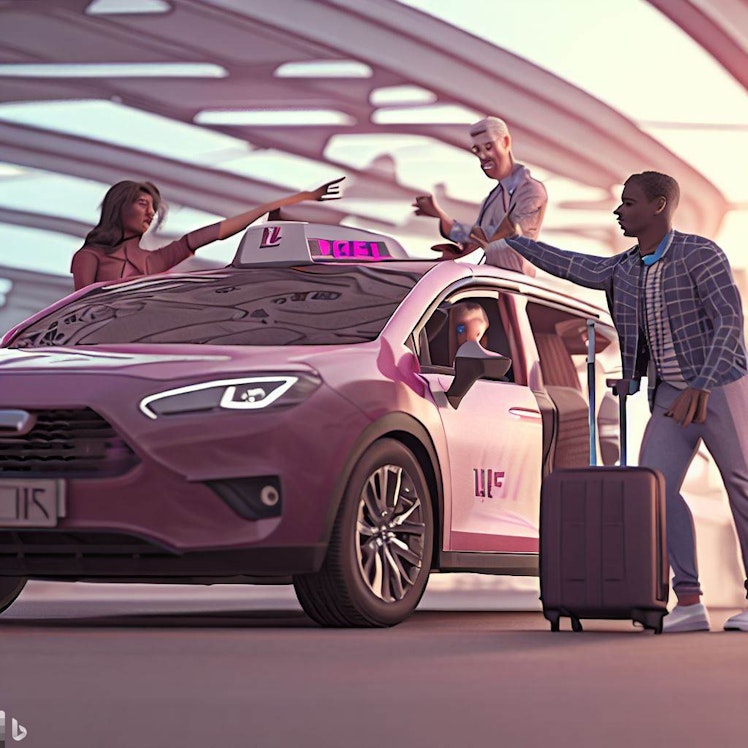Trending Assets
Top investors this month
Trending Assets
Top investors this month
In an interview with CBS, I was surprised to hear CEO David Risher say that he thinks Uber, Lyft, and consumers to have consumers download both the Uber and the Lyft apps. As he notes, "[L]ook, if every single person has Uber and Lyft on their phone...it's actually better for everyone because sometimes one of them is going to mess you up, I hope it's never me, but at the end of the day you want both and I think if we get both then people are going to start to use us more because people like Lyft."

While most Silicon Valley entrepreneurs and corporate executives prefer to create their walled gardens and compete for incremental revenue, David Risher's mindset is unheard of and what catches people's attention. As someone who has both the Uber and Lyft app installed, I find Lyft significantly cheaper than Uber, and I think that Risher's comment shows that he genuinely believes that Lyft will win a price war with Uber. Assuming that price is the main driver behind people choosing one rideshare app over another, having more people exposed to Lyft will help bring more riders to Lyft.
As for drivers, I assume that Risher prefers drivers to be loyal to one platform or another. That way, any drivers operating under the Lyft network will be able to add convenience to any Lyft riders demanding a ride when they need it. If drivers are allowed to provide rides for both platforms simultaneously, it can lead to a more balanced distribution of drivers between the two, potentially diluting each platform's market share and reducing their individual competitive advantage. Also, there is a risk of inconsistencies in service quality, vehicle branding, and overall customer experience, which can diminish the brand value of those rideshare giants. Plus, if drivers were allowed to work for both Uber and Lyft simultaneously, it would be challenging for each platform to gain comprehensive insights into driver performance, trip patterns, customer preferences, and other valuable data. Exclusive driver partnerships provide platforms with a more complete view of their operations and enable them to make informed decisions to optimize their services.

There is a case to be made that it would be to both platforms' benefit to let drivers provide rides to both platforms. Firstly, it unlocks more supply of drivers for both platforms. Consumers get shorter wait times, drivers make more money, and the rideshare platform that has a customer waiting will be better able to provide a ride to that customer. Drivers will be better utilized as their idle time will be reduced and they can remain busy. Few people think about the increased driver satisfaction that comes with letting drivers switch between apps. When they're able to capitalize on higher prices in one platform, they're able to make more money and the satisfaction that comes with being able to advantage of an app's surcharge opportunity makes them more motivated to keep driving and provide great customer experience too. This will also allow drivers to reduce the deadhead miles problem. For context, deadhead miles refer to the distance a driver travels without a passenger. In sum, while letting drivers work for both Uber and Lyft benefits drivers more, the profit maximizing aspect of letting drivers work for both platforms allows Uber and Lyft to maximize the revenues that they can generate.
In conclusion, the surprising perspective of Lyft CEO David Risher challenges the conventional wisdom of creating exclusive walled gardens to maximize profits. While his suggestion of having consumers download both Uber and Lyft apps may seem counterintuitive, it reflects a belief that increased exposure to Lyft can ultimately benefits by having their customers be consumers of both apps. This strategy is rooted in the assumption that price plays a significant role in consumers' choice of rideshare apps, and Lyft's competitiveness in terms of affordability could position them favorably in a price war with Uber. However, when it comes to drivers, maintaining exclusive partnerships with a single platform offers advantages such as brand consistency, data insights, and operational control but it also prevents them from maximizing profits. By striking a balance between driver flexibility and platform loyalty, Uber and Lyft can maximize their revenues and operational efficiency. Ultimately, the debate surrounding whether allowing drivers to provide rides for both platforms benefits Uber and Lyft remains complex, with potential advantages and disadvantages to consider for all stakeholders involved.

The Economics Professor thanks you for reading his lecture on profit maximizing behavior in the rideshare industry.
www.cbsnews.com
Lyft CEO David Risher shares new airport feature, his plans to resurrect company
Lyft CEO David Risher was hired in April 2023 to save the struggling ride-hailing company. He joins "CBS Mornings" for a closer look at some of the new features Lyft has rolled out and shares his plans for the company going forward.
I’ve got both downloaded, but Uber is always cheaper for me (and I get Lyft pink for free with my cc).
Already have an account?